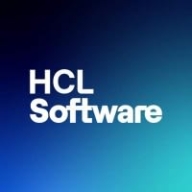

BigFix and Microsoft Defender for Endpoint are prominent endpoint management and security solutions, with Defender for Endpoint having the upper hand due to its extensive feature set, despite higher costs.
Features: Users highlight BigFix’s patch management, extensive software inventory capabilities, and strong asset discovery as valuable features. Microsoft Defender for Endpoint is noted for its advanced threat detection, seamless integration with other Microsoft products, and automated investigation and remediation capabilities.
Room for Improvement: BigFix users suggest enhancements in user interface, more effective report generation, and quicker installation times. For Microsoft Defender for Endpoint, users seek improvements in system performance efficiency, fewer false positives, and a more intuitive dashboard.
Ease of Deployment and Customer Service: BigFix users find the deployment process straightforward and commend its customer service. Microsoft Defender for Endpoint receives mixed reviews on deployment complexity but benefits from strong support provided by the comprehensive Microsoft support ecosystem.
Pricing and ROI: BigFix users are satisfied with setup costs and perceive good ROI due to its comprehensive management features. Microsoft Defender for Endpoint is considered expensive, but users believe the advanced protection it provides justifies the cost.
Without detection and protection measures, organizations would face substantial payments and reputational damage, including the necessity to inform customers about data breaches, potentially leading to loss of business.
We have seen a return on investment when using Microsoft Defender for Endpoint, as it saves labor by reducing the need for staff to focus on it.
The biggest return on investment for me when using Microsoft Defender for Endpoint is the time saving.
On a scale from one to ten, with ten being the highest quality, enterprise support provides timely responses, typically within four to eight hours.
Technical support from HCL is satisfactory unless there are customization requirements.
The level-one support seems disconnected from subject matter experts.
I rate Microsoft support 10 out of 10.
Due to our size, we don't have access to direct technical support, but the knowledge base, Microsoft Learn, and the articles available are really good.
BigFix requires some minimum configuration requirements.
We managed to scale it out in a short amount of time, with two months of planning and three months of implementation on 10,000 computers.
Microsoft Defender for Endpoint is scalable enough to handle various devices across environments, whether they are laptops, Android devices, or operating in hybrid environments.
Compatibility is its main feature.
I haven't seen any outages with Microsoft.
I rate Defender 10 out of 10 for stability.
Defender for Endpoint is extremely stable.
Building a management console is quick and simple, taking only one to two hours for setup.
The problem was related to the hardware configuration and hardware specifications.
In addition to reporting improvements, there should be a feature for application control to allow or disallow certain applications from being executed on endpoints.
Repeated interactions are necessary due to Level One's lack of tools and knowledge, hindering efficient problem-solving and negatively impacting our experience with Microsoft support.
In contrast, competing products offer reduced pricing for long-term commitments, which makes it difficult for us in that environment.
We use Microsoft partners to help govern the platform, and as part of an alliance, we want to gather data from each tenant and combine them for a complete view.
The pricing is pretty good and now follows a subscription model similar to SolarWinds, making it easier for customers to subscribe and unsubscribe.
Given our extensive Microsoft licensing, transitioning to Defender for Endpoint did not affect licensing costs.
It costs $15 per VM for the P2 plan, which is seen as affordable for customers.
The pricing, setup, and licensing were very easy and simple.
The BigFix features that have proven most effective include inventory, software delivery, software distribution, software catalog, and both software and hardware management.
I use this mainly to capture inventory for IBM products, and as BigFix was part of IBM, it gets easily integrated with IBM solutions.
BigFix supports something known as Patch Policies, which allows users to define that whenever critical patches are released, they should get evaluated against machines and automatically deploy them.
Defender for Endpoint's coverage across different platforms in our environment is pretty good. We have devices running Linux, Mac OS, Windows, iOS, and Android. It covers all of them.
Microsoft Defender for Endpoint provides a unified management interface allowing customers to manage their on-premises and hybrid infrastructures from a single pane.
One of the best features of Microsoft Defender for Endpoint is its database for identifying zero-day attacks or malware attacks.
| Product | Market Share (%) |
|---|---|
| Microsoft Defender for Endpoint | 9.9% |
| BigFix | 1.2% |
| Other | 88.9% |


| Company Size | Count |
|---|---|
| Small Business | 30 |
| Midsize Enterprise | 12 |
| Large Enterprise | 66 |
| Company Size | Count |
|---|---|
| Small Business | 79 |
| Midsize Enterprise | 34 |
| Large Enterprise | 87 |
HCL BigFix is a powerful patch management tool that enables organizations to simply control their patch management operations. It is designed so that IT security and operations teams can collaborate in the most effective way possible. Users that employ BigFix can find and fix issues with their endpoints faster than those that employ its competitors. It comes with thousands of security checks that can be deployed quickly and easily. These enable users to safeguard themselves from a wide variety of digital threats.
HCL BigFix Benefits
Some of the ways that organizations can benefit by choosing to deploy HCL BigFix include:
BigFix Features
Reviews from Real Users
HCL BigFix is a highly effective solution that stands out when compared to most of its competitors. Two major advantages it offers are its auto-patching capability and its user-friendly tools.
Santhosh K., the chief executive officer of Catnip Infotech Private Limited, writes, “The second valuable feature is, BigFix also has an auto patch updating feature, where the latest patches, and what is required for my system are automatically downloaded and kept ready for me. The solution applies the patch and notifies me after applying the patch. BigFix also gives me a ping saying that I should reset my system within a certain period of time, while the patch is being applied. Let's say, the patch is being applied and if there's an issue, the solution can revoke the applied patch, and revert back to the old state.”
Benedikt S., an application administrator, says, “It's very straightforward. The usability is very close to everyday technical tools that you use as a systems administrator. So it's quite user-friendly.”
Microsoft Defender for Endpoint is a comprehensive security solution that provides advanced threat protection for organizations. It offers real-time protection against various types of cyber threats, including malware, viruses, ransomware, and phishing attacks.
With its powerful machine-learning capabilities, it can detect and block sophisticated attacks before they can cause any harm. The solution also includes endpoint detection and response (EDR) capabilities, allowing organizations to quickly investigate and respond to security incidents. It provides detailed insights into the attack timeline, enabling security teams to understand the scope and impact of an incident.
Microsoft Defender for Endpoint also offers proactive threat hunting, allowing organizations to proactively search for and identify potential threats within their network. It integrates seamlessly with other Microsoft security solutions, such as Microsoft Defender XDR, to provide a unified and holistic security approach. With its centralized management console, organizations can easily deploy, configure, and monitor the security solution across their entire network.
Microsoft Defender for Endpoint is a robust and scalable security solution that helps organizations protect their endpoints and data from evolving cyber threats.
We monitor all Endpoint Protection Platform (EPP) reviews to prevent fraudulent reviews and keep review quality high. We do not post reviews by company employees or direct competitors. We validate each review for authenticity via cross-reference with LinkedIn, and personal follow-up with the reviewer when necessary.